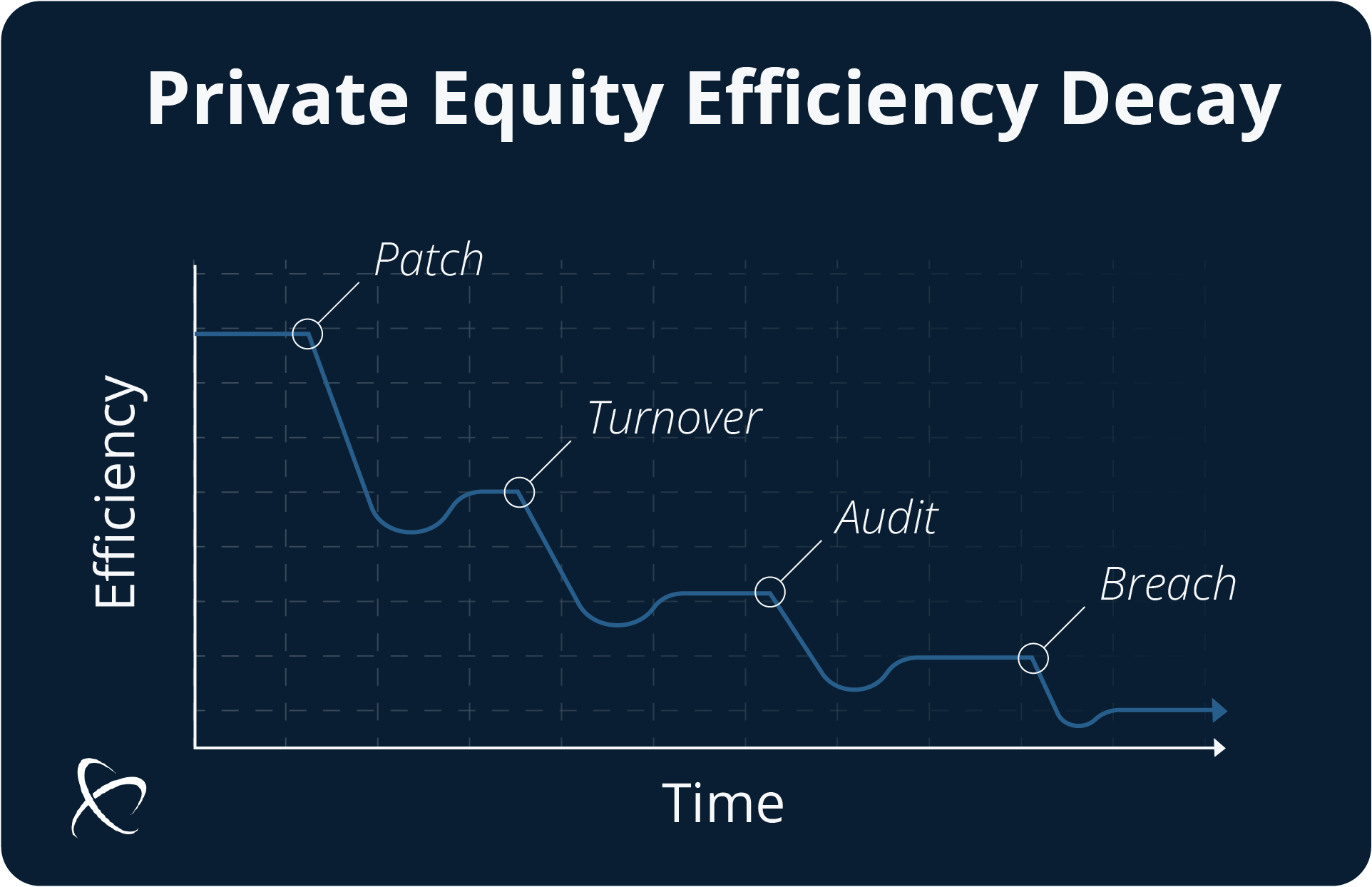The Hidden Cost of Scale
Tickets start taking longer. Calls feel more rushed.
You catch yourself wondering, “Do they even know what our company does anymore?”
At first, you brushed it off. Normal turnover. Just growing pains.
But then it happens again. And again. And now? You’re stuck explaining to your CEO why the MSP you fought for is dropping the ball in Q4… again.
Because you didn’t just lose an engineer.
You placed a long-term bet on a short-term system — and now the house is calling in its chips.

The People Aren’t the Problem. The Model Is.
On the surface, PE-backed MSPs look like a smart choice.
- Big funding
- National reach
- Competitive pricing
- Friendly help desk
But peel back the polish, and you’ll find a machine optimized for acquisition — not alignment. Because their priority isn’t your roadmap. It’s their return. And you feel that in every layer of service:
- Fresh engineers who don’t know your history
- “Strategic” QBRs run from a slide deck template
- Long-term planning that evaporates the moment an investor signals a pivot
You were promised scale. But what you got was rotation.
80% of PE Acquisitions We’ve Seen End the Same Way
More chaos. More churn. More confusion.
We’ve watched it firsthand — 4 out of every 5 PE acquisitions we’ve encountered end in:
• Slower response times
• Longer resolution windows
• Policy whiplash from new leadership
• A carousel of engineers who never stay long enough to build trust
• Missed hardware cycles, unmanaged patches, and rising security risks
At first, it’s frustrating. Then it becomes dangerous. Because it quickly shifts from just “wasting time’ to playing roulette with resilience.
The Silent Spiral No One Mentions

PE-backed MSPs don’t collapse overnight. They decay in silence. Because the problems you’ll face aren’t dramatic. They’re cumulative.
• A patch missed here
• An endpoint left exposed there
• A co-managed plan that never gets updated
• An engineer turnover that wipes your network knowledge clean
It doesn’t look like failure. It looks like drift. And by the time you notice, you’re two audits behind and one breach away from panic.
Embedded IT vs. Outsourced Chaos
Most CIOs still think the choice is:
“Which MSP is the most responsive?”
Wrong question. The real question is:
“Which MSP is embedded in our business — and who’s just clocking tickets?”
A Snapshot of What That Looks Like
Outsourced
| Feature | Included |
|---|---|
| Aligns IT with business goals | No |
| Co-authors your growth roadmap | No |
| Solves root causes, not just symptoms | No |
| Provides foresight, not just alerts | No |
| Feels like an irreplaceable partner | No |
Embedded
| Feature | Included |
|---|---|
| Aligns IT with business goals | Yes |
| Co-authors your growth roadmap | Yes |
| Solves root causes, not just symptoms | Yes |
| Provides foresight, not just alerts | Yes |
| Feels like an irreplaceable partner | Yes |
|
Overview
|
Outsourced
|
Embedded
|
|---|---|---|
|
Aligns IT with business goals |
No
|
Yes
|
|
Co-authors your growth roadmap |
No
|
Yes
|
|
Solves root causes, not just symptoms |
No
|
Yes
|
|
Provides foresight, not just alerts |
No
|
Yes
|
|
Feels like an irreplaceable partner |
No
|
Yes
|
5 Questions to Test Your MSP’s True Alignment
Not sure where your current MSP stands? Ask there in your next QBR:
1. How often do we work with the same engineers?
2. What % of issues are resolved before tickets are created?
3. How do you handle knowledge retention through turnover?
4. What’s your 5-year tech forecast for our business?
5. Who do you report to — us, or your investors?
If the answers feel vague, defensive, or templated? You’re not in a partnership. You’re on a procurement spreadsheet.

The Real Bill Comes Later
Yes, embedded IT feels expensive — until you compare it to six figures in lost productivity. Take something as simple as a password reset.
- Password reset resolution time = 4 to 6 hours
- Employee hourly rate= $34/hour
- Downtime per ticket = 4 hours
- Tickets per month = 80
Monthly productivity loss: $34 x 4 hours x 80 tickets = $11,200
Annualized cost of poor IT = $134,400 per year
Multiply that delay across teams, across months, across years. Then add in onboarding time for new techs, missed security patches, delayed procurement cycles, plus erosion of trust in IT, and you’re not really saving money. You’re absorbing risk. Because the same price tag with a different logo isn’t a step forward.
It’s a sideways move.
You’re the Anchor. Your MSP Should Be the Extension.
You’re the cultural anchor. The strategic architect. The guardian of operational confidence. And you can’t lead from inside a revolving door.
If your MSP is:
• Recycling tickets
• Rotating engineers
• Reacting instead of anticipating
• Reporting to investors instead of you
Then your tech stack shouldn’t be your biggest concern. It should be your [support model]. Want to See Where You Really Stand? Take our 2-minute MSP Maturity Map Quiz. You’ll get a custom breakdown of your current support relationship — and whether it’s keeping you stable… or stuck.

The Final Word
You don’t need faster tickets. You need fewer of them. And no private equity playbook is going to get you there. Because this isn’t about speed. It’s about alignment. It’s about accountability. It’s about systems that work before they break. And partners who show up before they’re called.
Let's talk.
